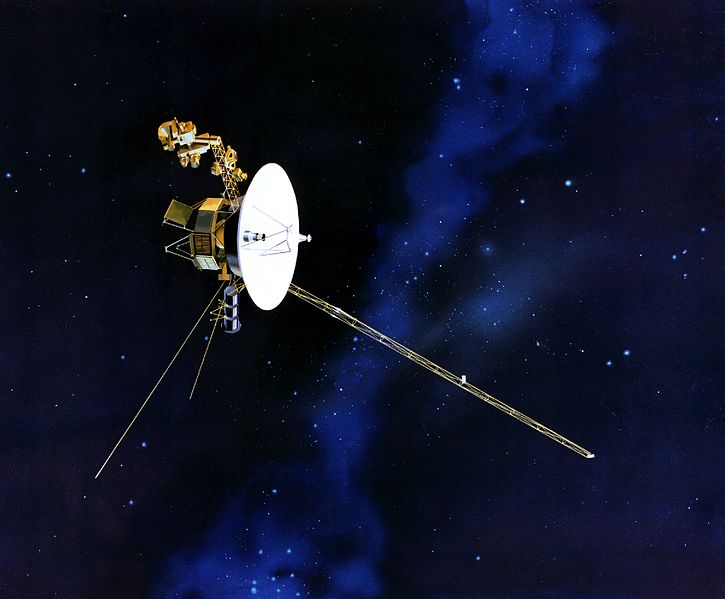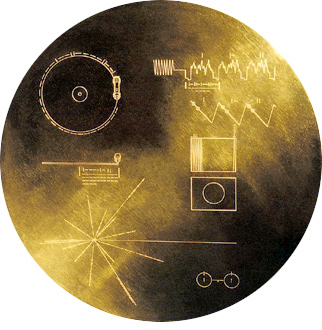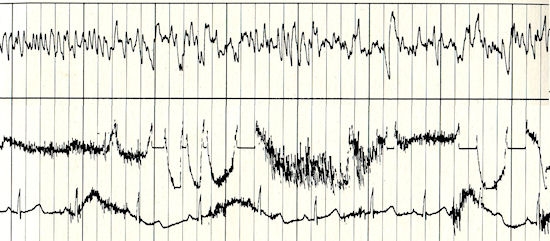After 33 years of travel, the two Voyagers are pushing through the outer boundary of our solar system, preparing to penetrate interstellar space, according to a briefing held by NASA on April 28, 2011. The two Voyagers are currently the most distant human-made objects from Earth and the only ones to travel beyond our solar system. Each carries a golden record with greetings from Earth in 55 languages, music, and an EEG showing the brain waves of a woman in love.

Since the time of both Voyager launches in 1977 (when Jimmy Carter was president of the U.S. and Star Wars was popular), the probes have given the first detailed images of Jupiter, Saturn, Uranus and Neptune. After their treasured discoveries, Voyager 1 used the gravity of Saturn to fling itself along a path that will carry it out of the solar system, and Voyager 2 used Neptune for a similar boost. Their mission currently is to explore the outermost reaches of the sun’s influence. Afterwards, they will continuing moving outward from Earth through interstellar space – the space between the stars – fueled by nuclear batteries that will keep them transmitting sparse information back to Earth, albeit in a powered-down state, until around 2020. After that, they will be moving outward still, silent messengers from Earth to the cosmos.

But first the Voyagers have to break out of the heliosphere – or sphere of our sun’s influence – a protective bubble around the sun made of solar plasma and magnetic fields, about three times the width of Pluto’s orbit. The Voyagers are now in the outermost layer of the heliosphere, where the pressure of interstellar gas slows the solar wind that is emanating outward from our sun. From the Voyager’s current vantage point, our sun appears as a tiny point of light. According to NASA, each Voyager probe should break free of the outermost part of the heliosphere in about five years.
Fewer than nine months before the Voyagers launched, NASA asked a famous astronomer, the late Carl Sagan, if he would put together a time capsule for any form of life that might intercept one of the Voyagers on what could be a multi-million-year journey outward from Earth. Sagan quickly assembled a team, and they set out to select images and audio that would portray life on Earth. Team member Ann Druyan (later Sagan’s wife) recalled how seriously they took this task:
I remember sitting around the kitchen table making these huge decisions about what to put on and what to leave off. We couldn’t help but appreciate the enormous responsibility to create a cultural Noah’s Ark with a shelf life of hundreds of millions of years.

Beethoven’s Symphony No. 5 and Chuck Berry’s “Johnny B. Goode” were among the songs selected, as was the Beatles’ “Here Comes the Sun.” However, the Beatles’ tune could not be included – even though the Beatles wanted it sent into space – because they did not hold the copyright to their own song.
Sagan’s team had to devise a durable way to preserve the information. At the time, eight-track tapes were popular recording devices, but a tape would not have stood up to space radiation and magnetic fields. So the team settled on a twelve-inch gold-coated copper phonograph record, capable of lasting for hundreds of millions of years in interstellar space.
The finished record – one for each Voyager – had over 100 images, 90 minutes of music, whale and bird songs, a sampler of diverse sounds from earth, including a barking dog, burbling mud, and a Saturn 5 liftoff, greetings from Earth in 55 human languages, and an EEG showing the brain waves of a woman in love.
The woman was Ann Druyan, who fell in love with Carl Sagan during the project and later married him. Her initial plan, before falling in love, was to have the EEG record her brain waves while she focused on various ideas and noteworthy individuals, in the event that highly advanced extraterrestrials could decipher human thought. But two days before the EEG appointment, she and Sagan had an important phone conversation (before even going on a date):
We decided to get married. It was a Eureka! moment for both of us – the idea that we could find the perfect match. It was a discovery that has been reaffirmed in countless ways since. My feelings as a 27-year-old woman, madly fallen in love, they’re on that record. It’s forever. It’ll be true 100 million years from now. For me Voyager is a kind of joy so powerful, it robs you of your fear of death.
Carl Sagan died in 1996, but not before he and Druyan wrote the following introduction for a CD version of the golden record, titled Murmurs of Earth:
A billion years from now, when everything on Earth we’ve ever made has crumbled into dust, when the continents have changed beyond recognition and our species is unimaginably altered or extinct, the Voyager record will speak for us.

Some say the odds of extraterrestrials finding one of the golden records are infinitesimal and the being most likely to find one of the records would be a human, a descendant of modern-day humans, advanced to travel among the stars. It will be 40,000 years before either Voyager comes within a few light-years of another star. From there, they will drift endlessly in the Milky Way.
David McComas investigates heliosphere surrounding our solar system











